Simple Steps for Drilling Through a Metal Door

When it comes to home improvement projects, drilling through a metal door may seem like a daunting task. However, with the right tools and techniques, it can be a simple and straightforward process. Whether you’re installing a new lock or adding a peephole, drilling through a metal door doesn’t have to be a challenge. In this article, we will guide you through the step-by-step process of drilling through a metal door.
Before you begin, it’s important to gather all the necessary tools and materials. You will need a power drill with a drill bit specifically designed for metal, such as a high-speed steel (HSS) bit. Additionally, you will need a tape measure, a pencil, and safety glasses to protect your eyes from any flying debris.
Start by measuring and marking the exact spot where you want to drill. Use a tape measure to ensure accuracy, and mark the spot with a pencil. This will help guide your drill and prevent any mistakes. If you’re drilling through a door that has insulation or other materials inside, make sure to take that into consideration and choose an appropriate location.
Next, secure the door in place to prevent any movement while drilling. You can use clamps or ask a friend to hold the door steady for you. This will ensure that the drill bit doesn’t slip or damage the surface of the door.
Once you’re ready to drill, put on your safety glasses and hold the drill firmly. Start drilling at a low speed to create a pilot hole. This will help guide the drill bit and reduce the risk of slipping. Once the pilot hole is created, gradually increase the speed and apply steady pressure to drill through the metal door.
Preparation for Drilling
Before you start drilling through a metal door, it’s important to take some preparatory measures to ensure a successful outcome and minimize any potential damage. Here are the steps you need to follow:
Gather the necessary tools:
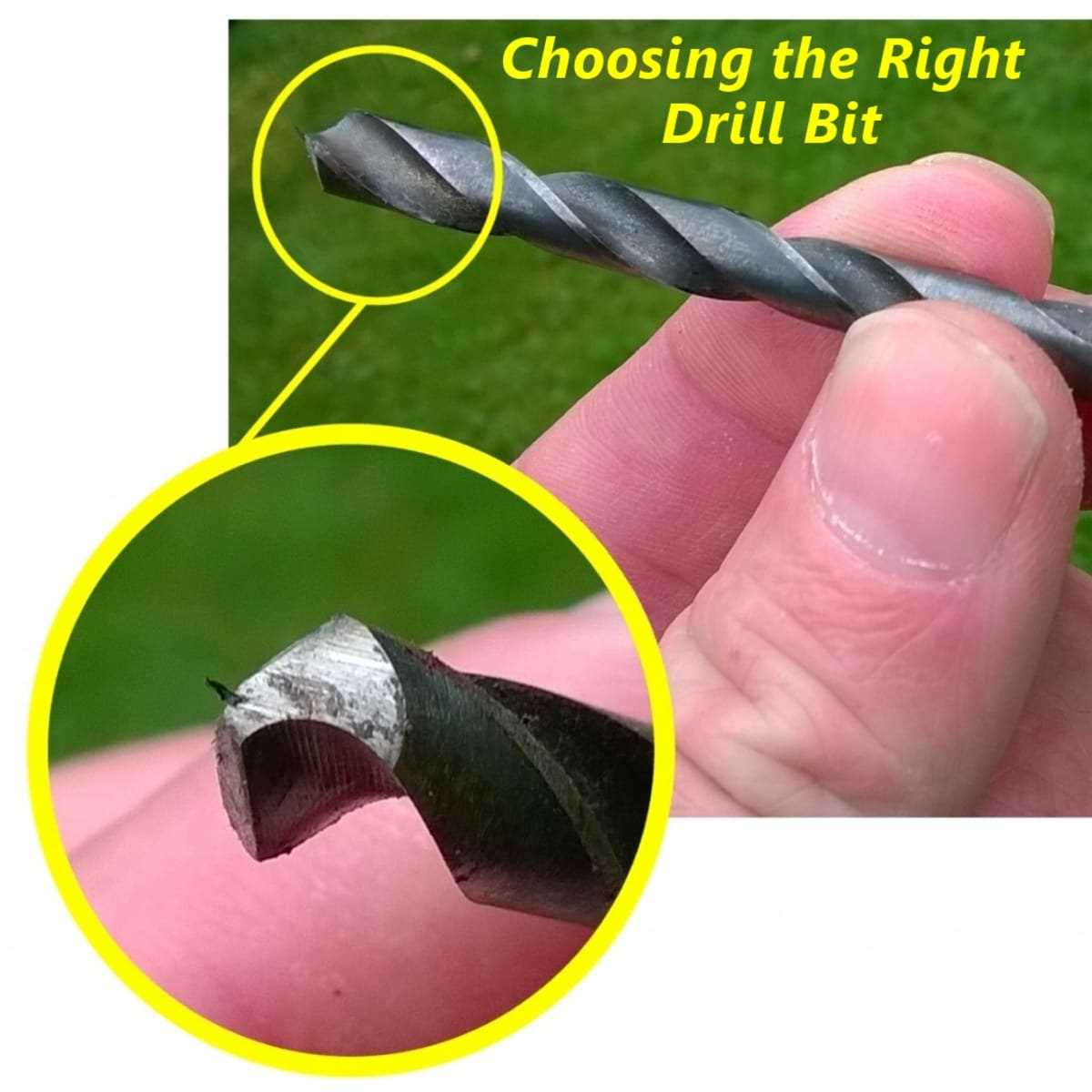
- A power drill
- A drill bit suitable for metal
- Protective goggles
- Work gloves
- A tape measure
- A pencil or marker
Choose the right drill bit:
Not all drill bits are created equal, and using the wrong one can lead to inefficient drilling or even damage to both the bit and the metal door. Make sure to select a drill bit specifically designed for metal or steel. It’s recommended to use a titanium-coated or cobalt drill bit, as they are known for their durability.
Measure and mark the drill spot:
Using a tape measure, carefully determine the exact spot on the metal door where you want to drill. Mark the spot with a pencil or marker to ensure accuracy. Double-check the measurements before proceeding.
Prepare the drill and secure the door:
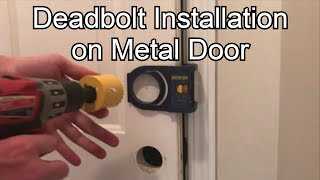
Insert the appropriate drill bit into the power drill. If your metal door is not already fixed in place, you will need to secure it to prevent any movement or wobbling during the drilling process. Use clamps to firmly hold the door in place or ask someone to hold it steady for you.
Put on safety gear:
Before starting the drilling process, always prioritize safety. Put on protective goggles to shield your eyes from any metal shavings or debris. Additionally, wear work gloves to protect your hands from sharp edges and potential injuries.
Clear the workspace:
Ensure that your work area is clear of any obstacles or clutter that may hinder your drilling. This will allow you to move freely and safely during the process.
Double-check everything:
Before you start drilling, take a moment to double-check all the preparations you have made. Check if the drill bit is securely attached, the door is properly secured, and your safety gear is on.
Proceed with caution:
Once you have completed all the necessary preparation steps, you can start drilling through the metal door. Remember to maintain a steady hand and apply consistent pressure while drilling. Avoid excessive force or pushing too hard, as this may result in the drill bit getting stuck or breaking.
Following these preparation steps will help ensure a smooth drilling process and increase the likelihood of achieving the desired results when drilling through a metal door. Always prioritize safety and take your time to avoid any mistakes or accidents.
Gather the necessary tools
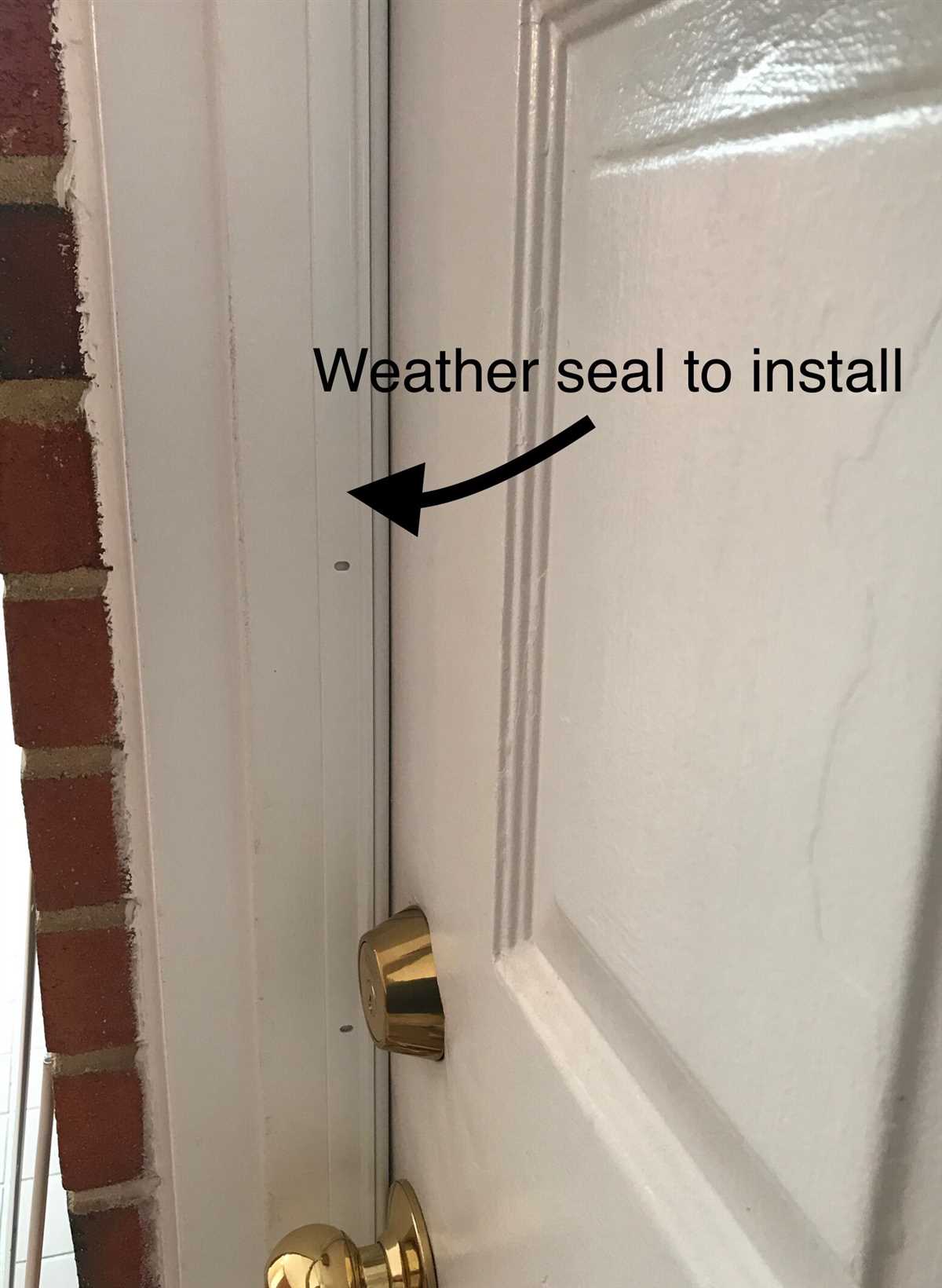
- Drill: You will need a power drill to drill through the metal door. Make sure the drill is equipped with a sharp drill bit suitable for metal drilling.
- Work gloves: Metal edges can be sharp, so wearing work gloves will protect your hands from cuts or injuries.
- Safety glasses: When drilling through metal, small metal chips or sparks may fly off, so it is important to wear safety glasses to protect your eyes.
- Measuring tape: Use a measuring tape to measure and mark where you want to drill on the metal door. This will help ensure accurate drilling.
- Masking tape: Applying masking tape on the drilling spot can help prevent the drill bit from slipping and provide additional grip.
- Marker or pencil: Use a marker or pencil to mark the drilling spot on the masking tape. This mark will act as a guide for drilling.
- Clamps: If you are drilling horizontally, clamps can help secure the metal door in place, preventing it from moving during the drilling process.
- Cordless drill battery: If using a cordless drill, ensure that the battery is fully charged before starting the drilling process.
Measure and mark the drilling spot
Before you start drilling through a metal door, it’s essential to measure and mark the exact spot where you want to drill. This will help ensure accuracy and prevent any mistakes. Here are the steps to measure and mark the drilling spot:
- Use a tape measure or ruler to determine the precise location for the hole. Take into consideration the purpose of the hole and the size of the object you will be installing.
- Mark the spot with a pencil or marker. Make sure the mark is clear and visible.
- If you are drilling multiple holes, use a level or a straight edge to ensure they are aligned correctly.
Once you have accurately measured and marked the drilling spot, you can proceed with the next steps in the drilling process. Remember to take your time and double-check your measurements before drilling to avoid any unnecessary errors.
Choosing the Right Drill Bit
1. Consider the Material of the Door
Before selecting a drill bit, it is important to consider the material of the metal door. Different door materials may require different types of drill bits for optimal results. Common types of metal doors include steel, aluminum, and stainless steel.

2. Determine the Size of the Hole Needed
The size of the hole you will be drilling is another crucial factor to consider when choosing a drill bit. Measure the diameter of the hole you need to drill, as this will determine the size of the drill bit required.
3. Select the Right Type of Drill Bit
There are several types of drill bits available that are suitable for drilling through metal doors. Some common types include:
- Twist Drill Bits: These are the most common type of drill bits and are suitable for drilling through various materials, including metal. They have a pointed tip and spiral-shaped flutes.
- Cobalt Drill Bits: Designed specifically for drilling through hard metals like stainless steel or cast iron, cobalt drill bits have a high heat resistance and can withstand high-speed drilling.
- Step Drill Bits: These drill bits have multiple cutting edges and are ideal for drilling large holes in thin metal doors.
- Unibit Drill Bits: Also known as step cone drill bits, unibit drill bits are great for drilling multiple sizes of holes. They have a cone-shaped tip with multiple steps.
4. Use a Pilot Hole
For best results, it is recommended to use a pilot hole when drilling through a metal door. A pilot hole helps guide the drill bit and prevents it from slipping or wandering. Start with a smaller drill bit and gradually increase the size until you reach the desired hole size.
5. Consider the Drill Bit Coating
Some drill bits may come with coatings that help reduce friction and increase durability. Examples of drill bit coatings include titanium nitride (TiN) and black oxide. Consider using coated drill bits for smoother drilling and longer tool life.
6. Use Lubrication
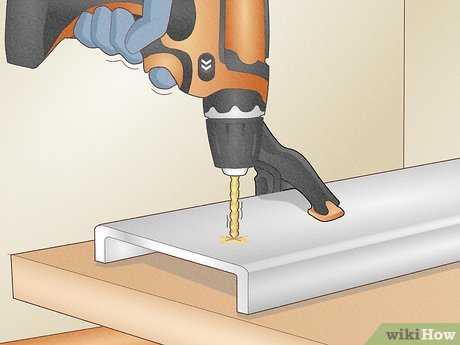

When drilling through a metal door, it is beneficial to use a lubricant such as cutting oil to reduce heat and friction. Applying lubrication can help prolong the life of the drill bit and improve drilling performance.
7. Consult the Drill Bit Manufacturer’s Recommendations
When in doubt, refer to the manufacturer’s recommendations for the specific drill bit you are using. The manufacturer’s guidelines will provide valuable information on the optimal usage and performance of the drill bit.
8. Safety Precautions
Always wear protective eyewear and gloves when drilling through a metal door to protect yourself from flying debris. Follow all safety precautions outlined in the drill manual and exercise caution while operating the drill.
Consider the material and thickness of the door
Before drilling through a metal door, it is important to consider the material and thickness of the door. Different types of metal doors may require different tools and techniques for drilling. Additionally, the thickness of the door will determine the length of the drill bit needed.
Material:
There are various types of metal doors available, such as steel, aluminum, and iron. Steel doors are the most common, as they offer durability and strength. Aluminum doors are lighter and more affordable, but they may not be as strong as steel doors. Iron doors are heavy and provide the highest level of security.
Thickness:
The thickness of a metal door can range from 1/16 inch to 1/4 inch or more. Thicker doors will require a more powerful drill and a longer drill bit. It is important to measure the thickness of the door before drilling to ensure you have the appropriate tools.
Considerations:
- Research the specific type of metal door you have to determine the best drilling techniques.
- Consult the manufacturer’s guidelines for any specific instructions or recommendations.
- Invest in high-quality drill bits that are designed for metal drilling.
- Consider using a drill press or a magnetic drill for better precision and stability.
By considering the material and thickness of the door, you can ensure that you have the proper tools and techniques for drilling through it effectively and safely.
Select the appropriate drill bit type
When drilling through a metal door, it is important to use the right type of drill bit to ensure a clean and efficient drilling process. Metal doors require special drill bits that are designed to cut through this tough material. Here are some commonly used drill bit types for drilling through metal doors:
- High-speed steel (HSS) drill bits: These drill bits are made from a durable and heat-resistant material that allows them to cut through metal effectively. They are suitable for drilling through thin metal doors.
- Cobalt drill bits: Cobalt drill bits are made from a high-strength cobalt alloy that gives them superior hardness and heat resistance. They are ideal for drilling through hard metal doors or thick metal plates.
- Carbide-tipped drill bits: These drill bits have a carbide tip that provides added strength and durability. They are suitable for drilling through metal doors as well as other tough materials like masonry and concrete.
When selecting a drill bit, consider the thickness and hardness of the metal door you are drilling through. Thicker and harder metal doors may require a stronger and more durable drill bit, such as a cobalt or carbide-tipped drill bit. Always choose a drill bit that is appropriate for the specific task at hand to ensure successful drilling.
Drilling Technique
Before you begin drilling through a metal door, it’s important to understand and follow the right technique. This will ensure that you achieve clean and precise holes without damaging the door or your tools.
Step 1: Choose the Right Drill Bit
Start by selecting the appropriate drill bit for the type of metal door you’re working with. Different metals require different types of drill bits, such as HSS (high-speed steel) or cobalt bits. Check the manufacturer’s recommendations or consult a hardware store professional if you’re unsure.
Step 2: Mark the Spot
Use a pencil or marker to mark the exact spot on the metal door where you want to drill the hole. This will help you maintain accuracy throughout the drilling process.
Step 3: Secure the Door
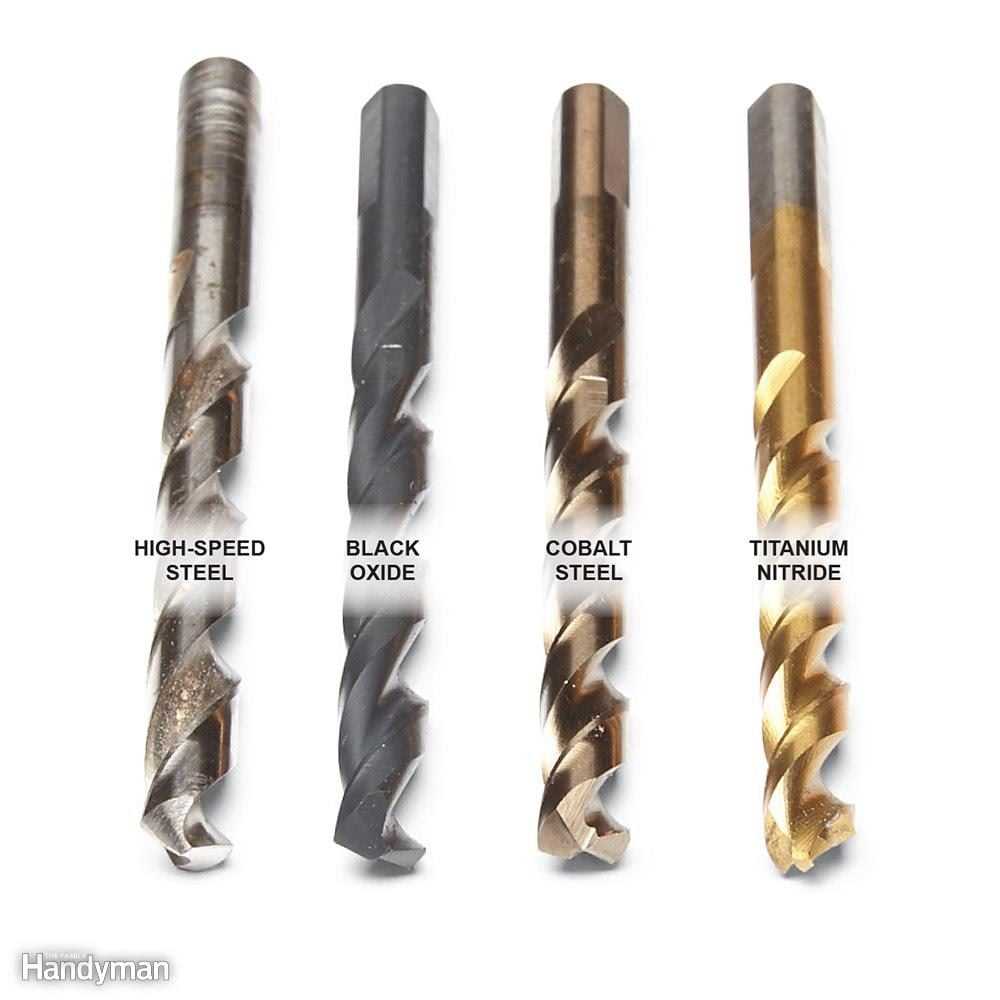
Before you start drilling, make sure the metal door is securely positioned. You can use clamps or ask a friend to hold it steady. This will prevent the door from moving or vibrating while you drill.
Step 4: Use Lubrication
Applying lubrication, such as cutting oil or even regular oil, to the area where you’ll be drilling can help reduce heat and friction. This will make the drilling process smoother and prevent the drill bit from dulling too quickly.
Step 5: Start Drilling
Hold the drill at a 90-degree angle to the metal door and apply steady pressure as you start drilling. Begin slowly and increase the speed gradually as the drill bit makes progress. Don’t force the drill; let it do the work.
Step 6: Avoid Overheating
If you notice that the drill bit or the metal door is getting too hot, stop drilling and let them cool down. Overheating can damage both the drill bit and the door, so it’s important to give them a break if needed.
Step 7: Clean the Metal Shavings
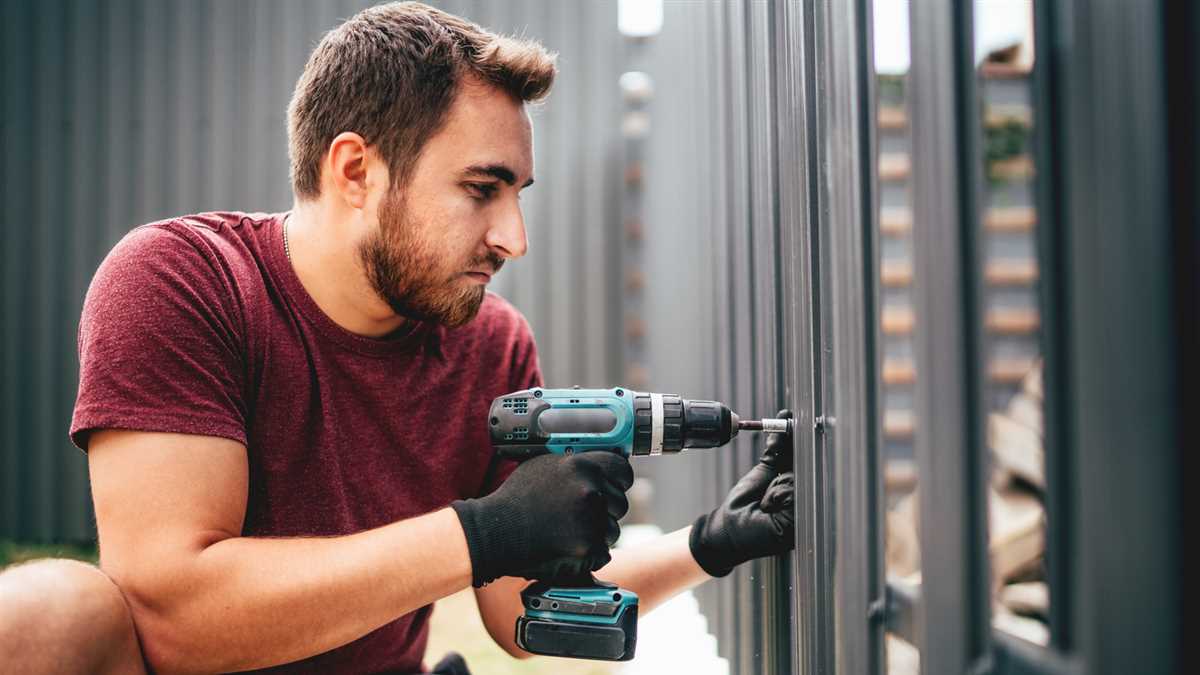
After drilling the hole, use a brush or vacuum to remove any metal shavings or debris from the surrounding area. This will help prevent damage to the door and ensure a clean finish.
Step 8: Test the Hole
Once you’ve drilled the hole, check its size and depth to ensure it meets your requirements. You can use a tape measure or other measuring tools to confirm the dimensions.
Step 9: Repeat if Necessary

If you need to drill additional holes in the metal door, repeat the drilling technique for each hole. Remember to choose the right drill bit size and follow the same steps to ensure consistent results.
By following these simple steps, you’ll be able to drill through a metal door with ease and precision. Remember to prioritize safety and take breaks if needed to prevent overheating. Always wear safety goggles and work in a well-ventilated area. Happy drilling!
Secure the door and use a clamp if needed
Before you begin drilling through a metal door, it is important to secure the door in place to prevent it from moving during the drilling process. This will help ensure accuracy and prevent any damage to the door or the drill bit.
Step 1: Secure the door
Start by finding a stable surface where you can place the metal door. This can be a workbench, a set of sawhorses, or any other sturdy surface that can support the weight of the door.
Make sure the door is positioned securely, with the area you plan to drill facing upwards. If necessary, use clamps or heavy objects to hold the door in place and prevent it from shifting during drilling.
Step 2: Use a clamp if needed
If the metal door is not positioned securely or tends to move while drilling, you can use a clamp to hold it in place. Choose a clamp that is suitable for the thickness and width of the door.
Place the clamp on the edge of the door and tighten it until the door is firmly held in place. Make sure the clamp does not obstruct the area where you intend to drill. If necessary, adjust the position of the clamp to avoid interference.
Using a clamp is especially helpful when drilling harder metals or when drilling larger holes that require more force. By securely holding the door in place, the clamp provides stability and prevents the door from vibrating or moving while drilling.
Start drilling at a slow speed and gradually increase
When drilling through a metal door, it is important to start at a slow speed and gradually increase it to prevent the drill bit from slipping or damaging the door.
Here are some steps to follow:
- Secure the door: Before starting drilling, make sure the metal door is securely in place. Use clamps or other methods to hold the door steady to prevent unnecessary movement.
- Choose the right drill bit: Select a drill bit that is suitable for drilling through metal. High-speed steel (HSS) or cobalt drill bits are commonly used for metal drilling.
- Mark the drilling spot: Use a marker or pencil to mark the exact spot where you want to drill on the metal door. This will ensure precision and accuracy.
- Start with a pilot hole: Begin drilling with a smaller drill bit to create a pilot hole. This will help guide the larger drill bit and prevent it from slipping off the mark.
- Apply steady pressure: Apply firm but controlled pressure while drilling. Let the drill bit do the work and avoid forcing it through. This will help maintain stability and prevent damage to the door.
- Keep the drill bit cool: Metal drilling generates heat, which can affect the performance of the drill bit. To prevent overheating, periodically withdraw the bit from the hole and allow it to cool down or use a cooling lubricant.
- Gradually increase speed: Start drilling at a slow speed and gradually increase it as needed. This will allow better control and reduce the risk of the drill bit slipping or the door getting damaged.
- Clean away debris: Periodically remove any metal shavings or debris from the hole to prevent them from interfering with the drilling process.
- Check progress: As you drill, check the progress to ensure that you are drilling straight and that the hole is being created as intended.
Following these steps will help you successfully drill through a metal door without damaging it. Remember to always prioritize safety and use appropriate protective gear, such as safety glasses and gloves, when drilling.
Finishing Touches
Once you have successfully drilled through your metal door, there are a few finishing touches you can make to ensure a clean and professional result.
1. Smooth the edges
After drilling, the edges of the hole may be sharp or rough. Use a metal file or sandpaper to smooth out the edges and create a clean opening.
2. Remove metal shavings
Drilling through metal can create metal shavings or debris. Carefully brush away any shavings using a soft brush or cloth to prevent them from scratching or damaging the door.
3. Clean the area
After completing the drilling, wipe down the surrounding area with a damp cloth to remove any dust or debris. This will ensure a neat and tidy finish to your project.
4. Test the hardware
Before finishing up, test the hardware or item you plan to install in the drilled hole. Ensure that it fits correctly and functions as expected.
5. Apply a touch-up finish
If the drill hole has exposed bare metal, consider applying a touch-up finish to prevent rust or corrosion. You can use a small amount of paint or a metal sealant to protect the exposed metal.
6. Clean up
Finally, clean up your work area by putting away any tools and materials. Dispose of any waste materials properly to ensure a safe and organized space.
By following these finishing touches, you can ensure that your drilled hole in the metal door looks professional and is ready for the installation of any hardware or item you desire.
FAQ:
What tools do I need to drill through a metal door?
You will need a power drill, a high-speed steel drill bit, masking tape, a center punch, a hammer, and safety goggles.
Can I use a regular drill bit to drill through a metal door?
No, you should use a high-speed steel drill bit specifically designed for drilling through metal.
How do I make sure the drill bit doesn’t slip off the metal door?
Before drilling, use a center punch and a hammer to create a small indentation on the spot where you want to drill. This will help guide the drill bit and prevent it from slipping.
What should I do to protect the surface of the metal door while drilling?
You can apply masking tape on the spot where you want to drill to protect the surface of the metal door from scratches or damage.
What precautions should I take while drilling through a metal door?
Make sure to wear safety goggles to protect your eyes from metal shavings. Also, be sure to work in a well-ventilated area and take breaks if needed to avoid overheating the drill.
What is the best drilling technique for drilling through a metal door?
Start by drilling a small pilot hole as a guide for the larger drill bit. Apply steady pressure and drill at a slow speed to prevent the drill bit from overheating. Use cutting fluid or lubricant to keep the drill bit cool and extend its life.
What should I do if the drill bit gets stuck in the metal door?
If the drill bit gets stuck, stop drilling and reverse the drill to remove it. You may need to use pliers or a vise grip to help loosen the drill bit from the metal door.
Video:









